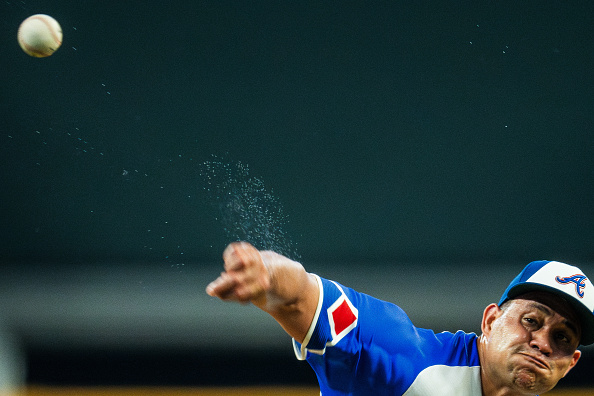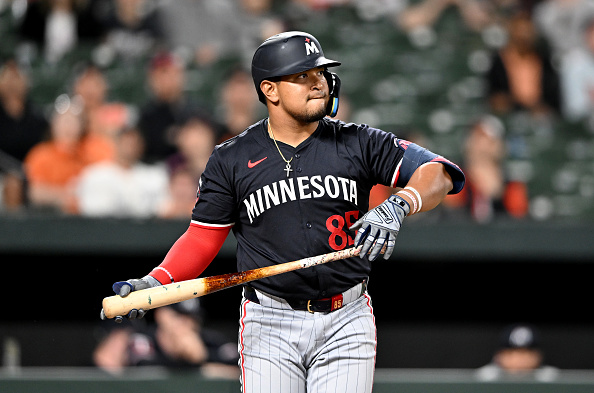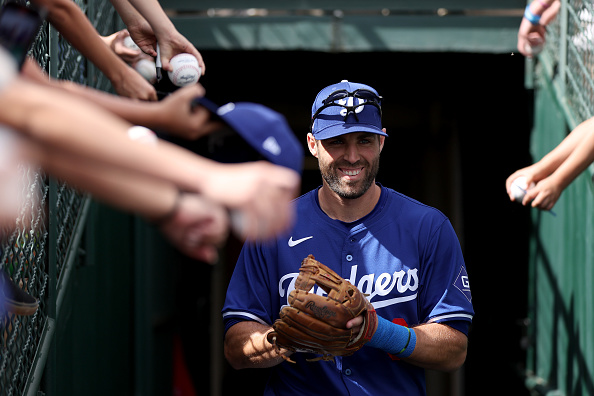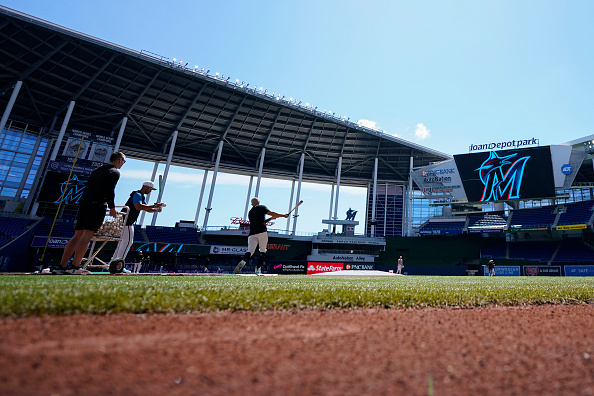During the early 2010s, two events happened simultaneously that changed baseball for over a decade. Pitchers started throwing significantly faster—velocity has spiked 5 mph in the last 20 years—and hitters adopted a new approach called the launch-angle evolution.
Pitchers, armed with a new weapon and needing to adapt to this new style of hitting, started elevating their fastballs using velocity and location to combat the uppercuts in hitters’ swings. This led to a pitching revolution in which throwing heat upstairs in the zone and tunneling breaking pitches off of it became the most effective way for pitchers to contend with this offensive trend.
“Pitching vertically” is a term I created to explain the way pitchers have been attacking hitters for most of the last decade. It involves getting hitters to swing and miss at pitches that are either above or below the strike zone. An example of the other pitching method (“pitching horizontally”) is Greg Maddux. While pitching vertically requires either high velocity or elite spin rate and is best with both, pitching horizontally prefers command and movement over spin rate and velocity. Its intentions are divergent, too. Horizontal pitching intends to induce weak contact or miss barrels, whereas vertical pitching endeavors to create swings and misses, striking hitters out.
When Voros McCracken developed DIPS (Defense Independent Pitching Statistics) theory, which led to the invention of stats like FIP and SIERA, pitchers had been pitching horizontally for the most part. There were always outliers, though, and some ways of getting hitters out never change. 99 mph right at the letters was, is, and always will be very hard to hit. Other examples are the two-seamer that comes back over the plate or exploiting a right-handed hitter’s inability to hit up-and-in, which are just a few time-proof expressions of this.
Yet, for the most part, pitchers of the late 1980s up until Matt Harvey and Stephen Strasburg pitched horizontally while pitching vertically was specifically used by “power pitchers.” Guys like Dwight Gooden, Sandy Koufax, Roger Clemens, or even Bob Feller were notorious for their lethal combinations of high heat and a nasty pitch they’d tunnel off it (Gooden and Koufax had the curveball, Clemens the split, and Feller the slider).
So while there were always a handful of elite starters actively attempting to strike hitters out, for the most part, pitchers were intent on inducing weak contact and missing barrels. In other words, they tried to get outs. This is the key to why DIPS was so revelatory and groundbreaking. While the vast majority of pitchers would not intend to strike hitters out, the best pitchers ended up having the best strikeout, walk, and home run rates anyway.
Amazingly, the knowledge and implementation of the DIPS concept haven’t changed its prowess at all. If anything, it has withstood the test of time and proven to be unflappable. The idea that modern pitchers are actively trying to strike hitters out because they can control only strikeouts, walks, and home runs has solidified DIPS as a core concept within the framework of Major League Baseball.
CHAPTER II: The Strike Zone
The strike zone is an artificial construct that encompasses a volume of space. A pitch that passes through it is considered a called strike; if a pitch misses the zone, it is a ball. Hitters have three main jobs: to swing at strikes, to not swing at balls, and to make contact. Within making contact, there is a wide array of outcomes and it is incumbent upon hitters to make solid contact, hard contact, or whatever terminology is preferred for hitting the ball with authority (line drives, power, frozen ropes, sweet spot, barrel percentage, exit velocity, and hard-hit rate).
The complication for hitters stems from the overlap, or lack thereof, between their personal contact zone and the artificial construct better known as the strike zone. In other words, a hitter may excel at hitting pitches that are a foot below the zone while showing no aptitude for making contact on pitches in the outer quadrant. For example, Vladimir Guerrero Sr. was especially adept at hitting anything over the strike zone, even if the pitch was a couple of inches off the ground. Yet, he would falter on pitches in the upper portion of the zone, under his hands, unable to make contact.
Therefore, we have now established that there are two zones: the strike zone and the other in which a hitter can contact the ball, which I call a hitter’s “contact zone.” Yet, there is still a third zone, one in which a hitter is capable of driving the ball, hitting it with authority, or hitting with power. I call this the “power zone.” While there are certain pitches hitters may be able to contact, their ability to hit those pitches with power is a different story. Like with a batter’s personal contact zone, there may be significant overlap between zones, yet the “power zone” is even more minuscule.
Backdoor pitches are a perfect example of a pitch that is in the strike zone, difficult to contact and almost impossible to hit for power. A backdoor pitch is one that traverses the entire distance from the pitcher’s hand to the plate, looking like a ball only to sneak into the strike zone at the last moment through its “backdoor.” In other words, as a pitch the batter perceives as a ball for the vast majority of its flight path, it is meant to catch hitters off guard and throw off their timing. It is a pitch in which any approach besides serving the pitch to the opposite field will be utterly futile.

Another example of this phenomenon is the up-and-away fastball. While it can be hit out of the ballpark by truly elite sluggers, most hitters cannot contest with the pitch in any way besides punching it to the opposite field. The vast majority of hitters trying to hit this pitch with authority will either miss it or roll it over to their pull side. Hitters like Kenny Lofton, Tony Womack, Luis Castillo, and Juan Pierre made their careers off of their abilities to generate contact on the fastball up in the zone.
The up-and-away fastball is one of the easiest pitches to make contact with as it has barely any time to move laterally. It also has the longest distance to travel from the hand of the pitcher to the plate. Today’s game is almost completely bereft of these hitters. They used to be described as slap hitters, and the good ones would hit .300 almost every year despite a low power output.
Within the chess match that is the hitter-pitcher confrontation, a slap hitter’s ability to take away the effectiveness of fastballs up in the zone seriously hampers pitchers’ abilities to strike out those hitters. The only option of retiring those hitters via the strikeout then becomes limited to breaking and offspeed pitches. Those pitches have a higher level of volatility in terms of commanding and controlling them, leading to pitchers throwing them for strikes less frequently. There’s also the issue of hanging breaking and offspeed pitches as if they are anywhere but down in the zone, which spells trouble for the pitcher. To major leaguers, hitting hanging pitches is the equivalent of hitting a baseball off a tee.
This, in a nutshell, is why slap-hitting remains a successful practice. There is a perception that slap hitters are more successful in getting base hits, yet this is somewhat of a misnomer. While these hitters put more balls in play, they do not have sway over their batting average on balls in play (BABIP) and are still very much at the whim of luck. Instead, by showing an aptitude for hitting certain pitches with a high degree of consistency, they alter the way pitchers can pitch to them, which suppresses their strikeouts even further. By minimizing strikeouts, they maximize their batting averages, and when they happen to have luck on balls in play, their average can skyrocket.
We have depicted three kinds of hitting zones: the artificial strike zone, contact zone, and power zone. A hitter’s skills can be broken down by zone. They must protect the strike zone, make contact in their contact zone, and hit with authority when pitched in their power zone. As for pitchers, the key is to play off these three zones, disturbing hitters’ timing while preventing them from reaching base and scoring runs.
In Part 2 of the series, we will delve into how these two elements (DIPS and hitters’ zones) overlap, plus what it means from the pitcher’s standpoint.
Main Image Credit:








